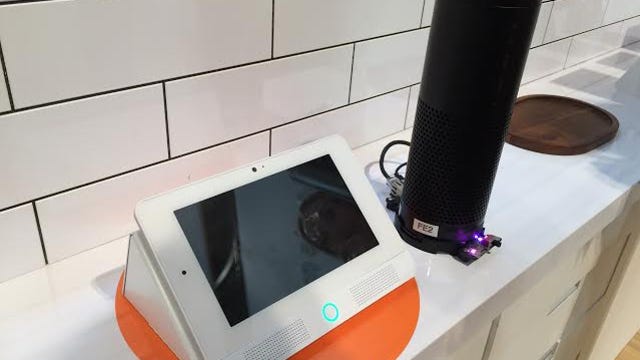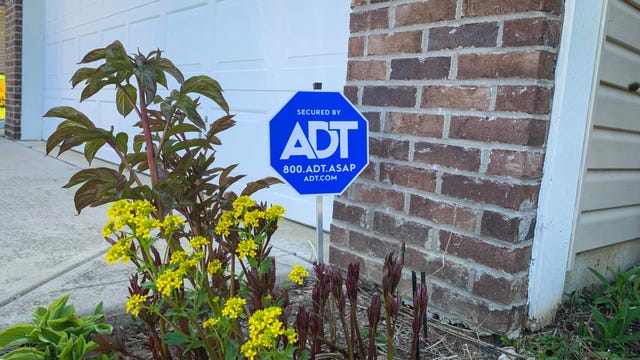ADT vs. Vivint: Comparing Two Popular, But Very Different, Home Security Systems





ADT’s new system and Trusted Neighbor features offer more integration than the brand has ever had.
If you are looking for a home security system, you will soon come across both names ADT and Vivint, popular brands for complete security systems that include sensors, keypads, hubs and cameras. But this is more than a blue-vs.-orange yard sign contest: the two companies have major differences in devices, integrations, how they handle contracts, quality of service and much more.
Vivint is a relative newcomer, but with emphasis on the word relatively — Vivint has actually been around for over 20 years. And yet, when it comes to deciding which service I recommend over the other, the distinction between “old school” and “new school” isn’t as important as you might think, especially with all the progress ADT has made lately. It comes down to cost, contracts, and what other smart home devices you have. I’ll explain that in a moment, but first, let’s take a look at each home security company, starting with the (relatively) new kid in town.
If you’re looking for the biggest names and biggest minds in smart home automation, Vivint is the way to go. The question is, does the bill you’ll ultimately get from Vivint for all this cutting-edge tech fit you and your budget? If you’re an average buyer, it’s hard to say since Vivint keeps everything behind quotes and questionnaires, but I tested their systems and dug into the details to find out more.
Vivint offers its own hub, sensors, and cameras (many offer wireless options), including a video doorbell, while not accepting third-party options for those models. It does have a smart thermostat, but you can integrate some Nest thermostats instead, and the system works with both Nest and Amazon Alexa smart speakers. Vivint also offers its own garage controls, lighting, a smart lock via Kwikset, and a smoke detector. It’s a fairly full-featured set of options, but it’s tightly tied to the Vivint ecosystem and only available through its site.
Vivint says the average installation package costs $2,400 for new customers, and about $500 for a basic starter kit. Some simple math tells us you could get a similar setup for about half that if you install everything yourself from a more affordable brand. Vivint also offers a professional monitoring service that starts at $40 a month but quickly goes up with the addition of smart cameras and other extras.
What do you get for all the extra money Vivint charges?
Simple answer: convenience. You don’t have to install anything, you don’t have to connect it all together, and if something goes wrong, there’s a toll-free number you can call and Vivint will send someone to diagnose and fix the problem. That’s nice for people who don’t like messing with smart devices, the elderly who might not have the know-how, and people with mobility issues who can’t climb ladders to install the kit themselves.
But let’s talk about a key difference with ADT: contracts. If you buy everything up front with Vivint, there’s no contract at all, just monthly payments. That’s a big difference from ADT, which still often requires multi-year contracts, regardless of how you buy. But if you get a Vivint system on installments, a contract is required, and those can be up to five years, so financing comes with a lot of strings attached.
Read our full review of Vivint Home Security.
ADT has undergone some major changes over the years, trying out different product lines and DIY approaches. At its current incarnation, the company offers both professional and DIY installations, with a relatively new ADT Plus app for control and a wireless product line that’s getting an update in 2024. You can get the same (or similar) gadgets and gizmos from ADT that you’d get from Vivint or another brand: smart locks, door and window sensors, keypads, and a connected thermostat.
Perhaps the strongest point of ADT’s lineup, however, is its deep integration with Google Nest and the Google Home app with Google Assistant. Support extends not just to Nest doorbells and Nest cameras, but also Schlage and Yale smart locks, Alexa and Echo devices, Sonos speakers, Apple Watches, and a few others. For now, that makes ADT a far better option for third-party smart home devices than Vivint — I’m as surprised as anyone. Plus, ADT’s latest Trusted Neighbor system gives you deeper customization for system access, down to letting specific people in at specific times, as well as facial recognition.
ADT’s pricing is on the high side of competitive. Most devices cost about the same or slightly more than comparable Vivint devices; a few cost a bit less. The monthly monitoring service is also quite expensive, starting at $35 for the basics but going up to $50 or more if you want smart home or security camera compatibility (and you probably do). Ultimately, they’re higher than Vivint without getting much more in return.
ADT has struggled to provide a cohesive experience across its hub, site, and app. While there are still some technical kinks, ADT Plus is a much better effort than ADT has given in the past, bringing it much closer to Vivint. It may not be perfect harmony, as Vivint’s more closed ecosystem does better, but it’s an improvement over previous attempts — and you have more choices along the way.
While this sore point is being resolved, ADT is still out of step with modernity with its contracts. You read that right: ADT still requires a contract for service. And the company includes positive penalty terms if ADT customers want to leave early. Even if you pay for all the hardware up front, the contract will still lock you in for 12 to 60 months (depending on the region) and cancellation can cost up to 75% of the remaining balance of the entire contract.
There is no way around this problem: you have to pay a lot more for ADT and it is a big hassle to switch, but you don’t get any something in exchange for more affordable systems. Vivint’s no-contract options really help in this case.
Read our full ADT Home Security review.
Conclusion: Vivint wins, but there are better options
While it’s a lot more similar than in previous years, Vivint is a winner if you’re looking for a professionally installed system. It’s cheaper for the same or similar equipment, you don’t have to shop around for third-party smart devices, and it doesn’t require a contract. ADT, meanwhile, has some promising system updates and more integration than ever with Google Nest devices and other third-party tech, making it a solid choice for Google Home users, even if its contracts and pricing remain stuck in the dark ages. But there are a few final points I want to make before you make a decision.
First, check out our guide to the best systems and the best DIY security systems in particular. You’ll find that you can get complete home security systems and add-ons from brands like Ring and SimpliSafe for much less. And these days, unless you have mobility issues or Real don’t know what kind of home security you want, there’s no reason to go for a professional installation when DIY is so easy. You can even find affordable home security systems for renters.
Secondly, the cost of monitoring can be problematic, especially if you opt for professional monitoring, which both brands typically require. That’s around $50 to $70 per month, which is a lot of money to charge for a monitoring center. Other systems can give you a lot of monitoring options for $20 to $30, much lower ongoing costs than ADT or Vivint.
But if you have the money to spend on a professionally installed security system — or if other choices aren’t readily available in your area — I think you’ll be perfectly happy with Vivint’s home security service. If, however, you like the idea of integrating facial recognition technology and Google Nest devices into a single security platform, ADT Plus may be a little ahead of the game with ADT’s latest changes.






